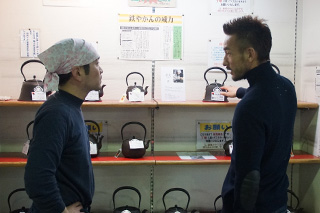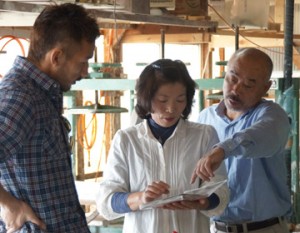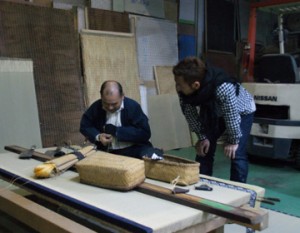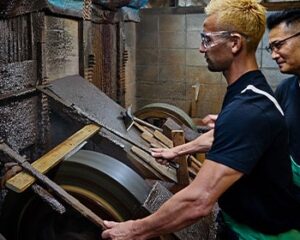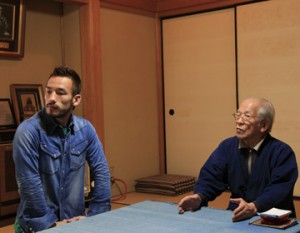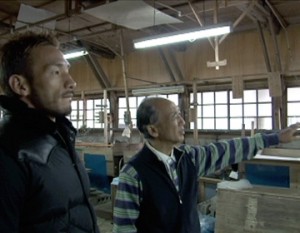The manufacturing process of Nambu ironware
We visited Iwachu Co., Ltd in Morioka city, Iwate to see the process of Nambu Ironware. Iwachu Co., Ltd was founded in 1902. It was one of the largest factories in Japan and produced iron kettles and ironware that were suited for daily use, but also produced handmade Nambu Iron kettles with the tradition that was passed on from about 400 years ago. We visited the workshop which also served as a tourist facility, ”Iwachu Tekkikan”, and watched the handiwork of the artisans.
At the workshop the process called ”fukimi” was just starting. Akira Yaegashi who is the traditional artist for Nambu ironware, was scooping the heated iron with a tool called ”toribe”. This involved melting the iron in the kiln of 1500℃, then pouring it into the cast. 2 other workers are holding onto the cast. The flames rose up from the cast, but he calmly removed the excess iron from the cast. It took about 25 seconds from the time he poured the iron into the cast, to removing the excess.
Nakata asked ”You pour the iron into the cast and immediately remove the excess. Does iron cool that fast?”
”Yes, when you pour the iron into the cast it cools down immediately. Iron melts over 1000℃ but it cools down instantly.”
Nakata got to try this process of ”fukimi”. It is the most spectacular part of Nambu ironware work, as you observe the iron changing before your very eyes.
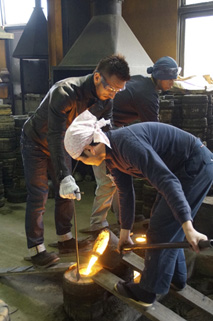
Nambu Tetsu Ironware contains many “kogei” skills
”The way we make Nambu Tetsu Ironware can be simply called as ”casting”. However, we need the knowledge of other traditional ”kogei” such as ceramics to make the cast from sand and clay, gold carving for the process of modifying the iron base, and lacquer to process the surface. Since it includes techniques from various traditional ”kogei”, it takes time to master it. And the more you know about it, the more you will be surprised how practical people were in the past.” commented Akira Yaegashi.
Currently, the production of iron is limited in Japan, so the raw material of crude iron is imported from overseas and refined to its optimum component at their own factory before use. The crude iron contains a lot of carbon and silicon, and the merit is that it can be made into ironware that is strong and hard to break.
”The iron is not the same as the old days, but the manufacturing technology has been handed down. I think this is due to the will of the craftsmen who continued the traditional techniques.” At Iwachu Co., Ltd there are craftsmen in their 20s and 30s. The handmade Nambu Tetsu Ironware is made one by one with the design drawn by the craftsmen.
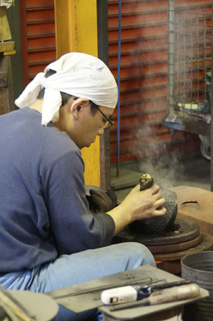
Enjoy the “change” as you use the items
”Iron kettles are not particularly difficult to handle. The more you use it the better it gets. It changes as you use it, and it reflects the lifestyle of the person using it. That is the charm.”
Akira Yaegashi told us that even the same product will look completely different when brought in for repairs.
”You will need to repair it at some point, but I am happy when they come back for repairs. It is such a pleasure that they think of repairing it so that they can keep using it.”
Handmade Nambu Ironware keeps the delicate technique and cherishes its taste. And they devote themselves to produce modern cookware such as iron pots and frying pans by modifying the technique of the Nambu Tetsu Ironware, so that many people in Japan and abroad can use it. They continue to produce it so that the people will know the charm of Nambu Tetsu Ironware from different angles.
